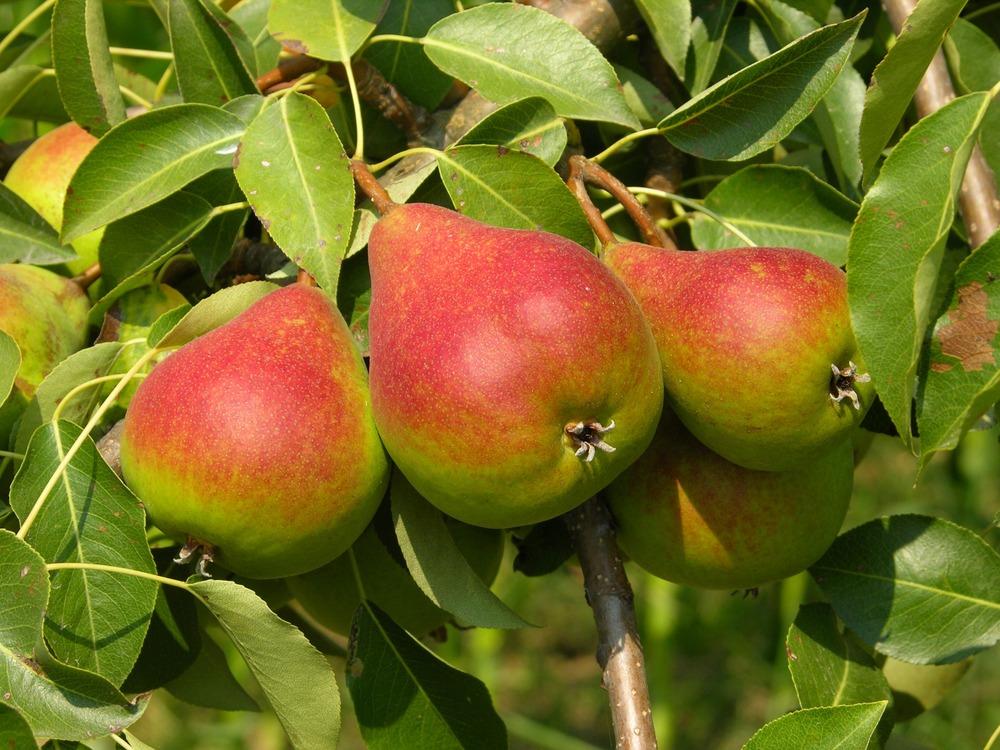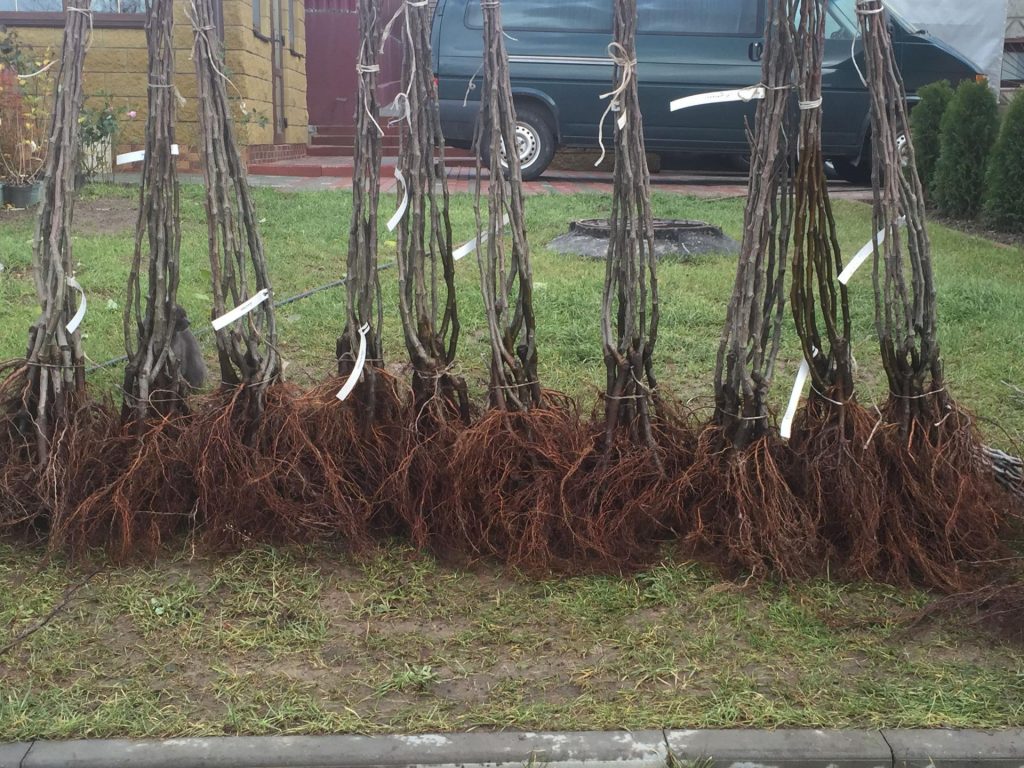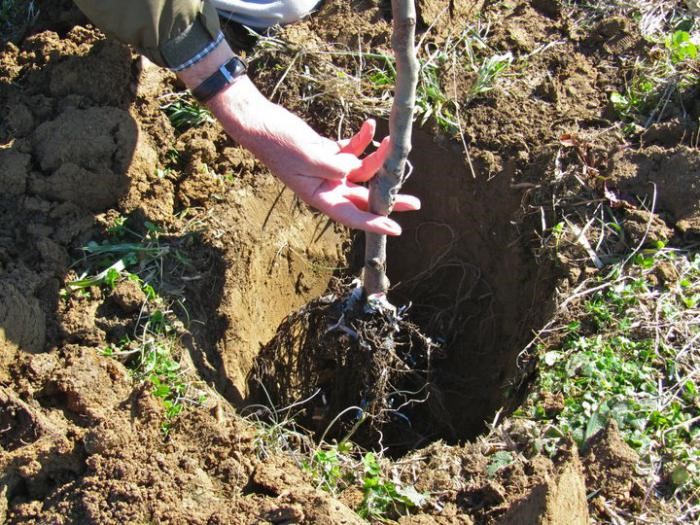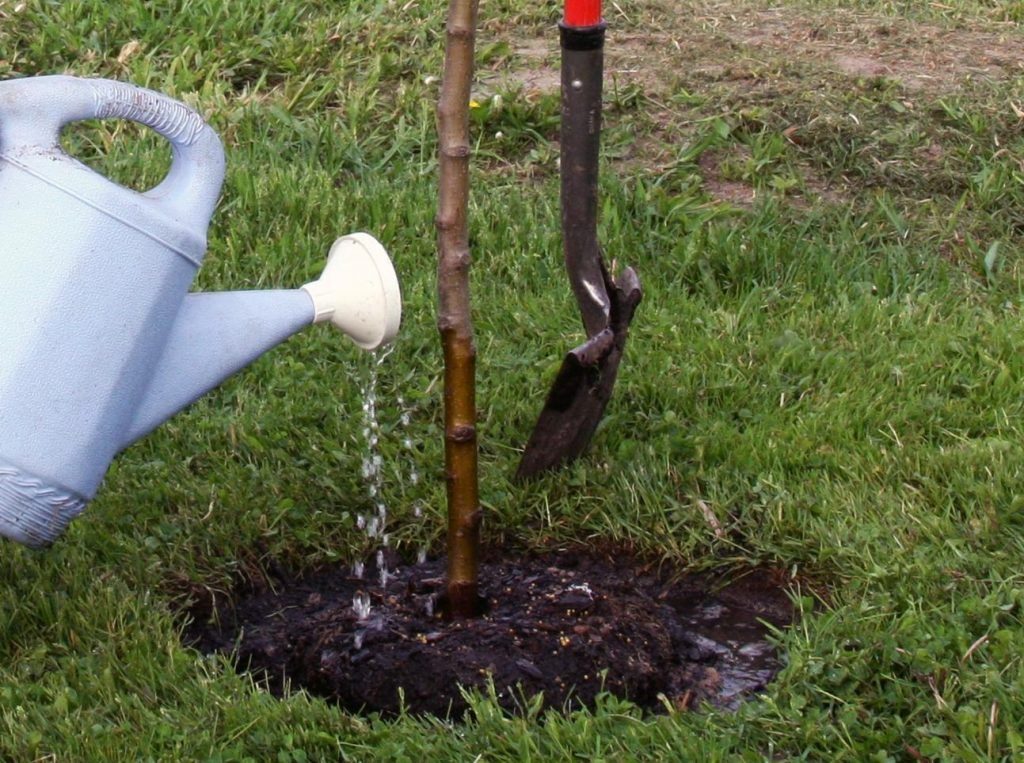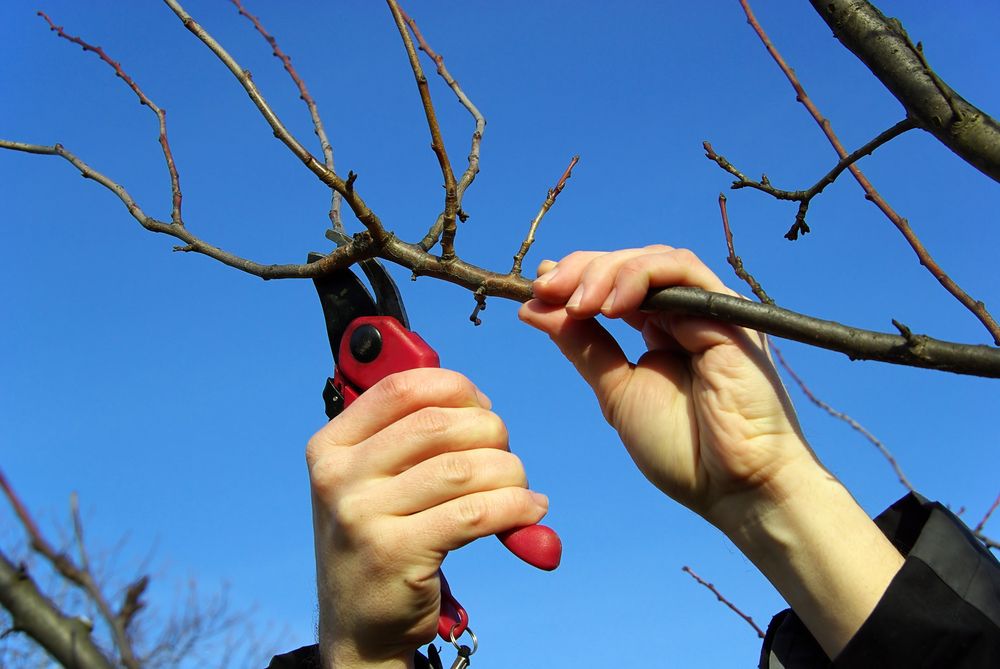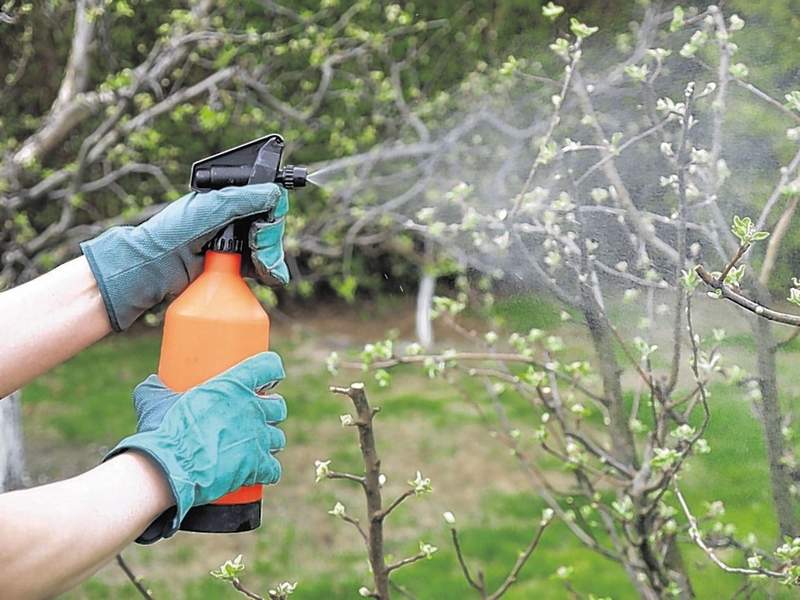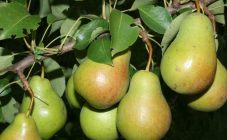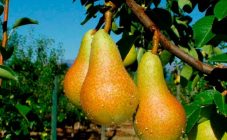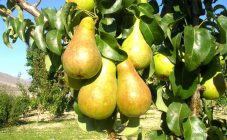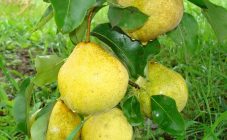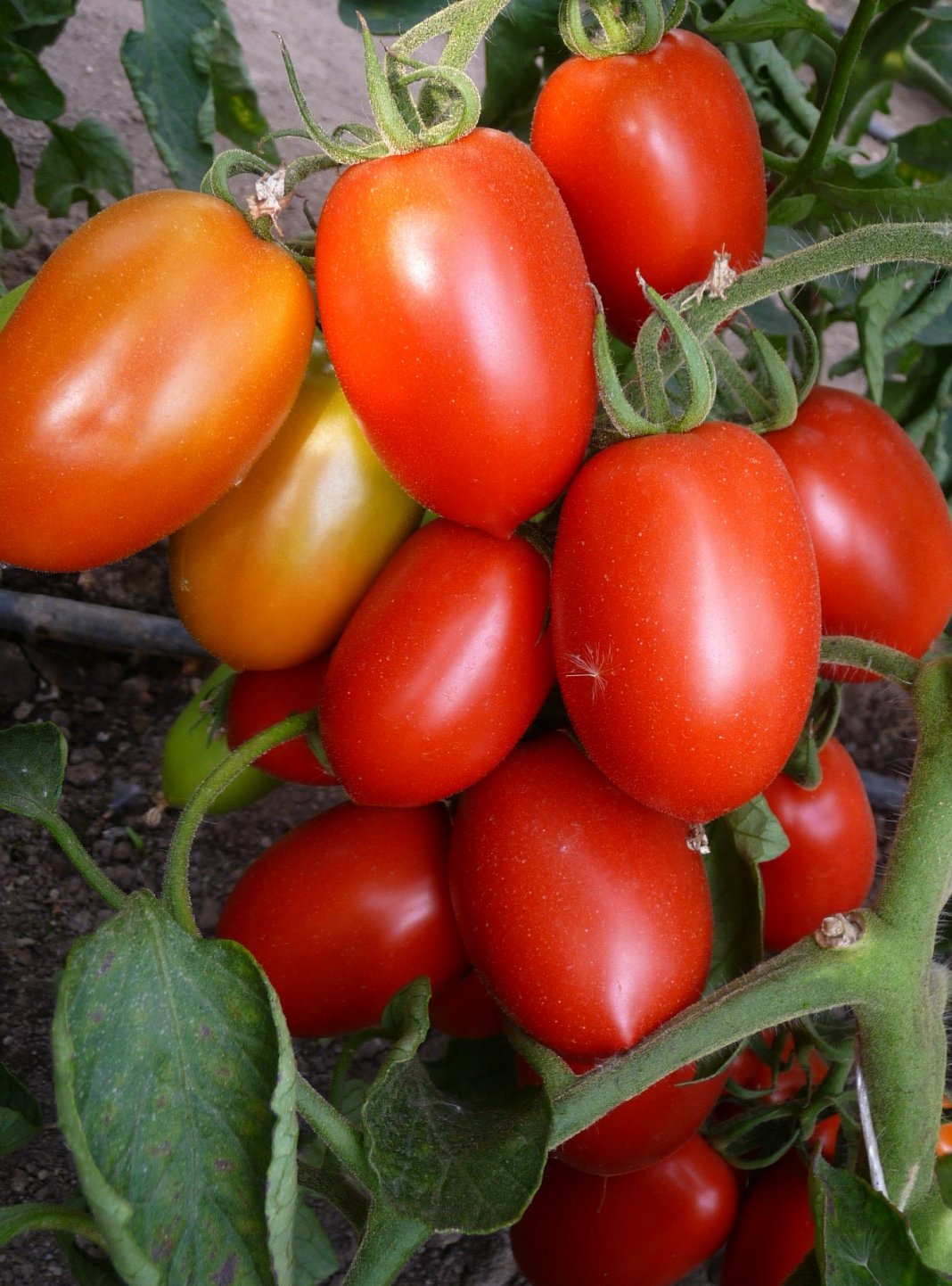Content:
Pear Krasnobokaya belongs to relatively young pear varieties that have already become widespread in Russia due to their high degree of adaptability. In view of a number of advantages, it is considered a very promising variety for cultivation both in large fruit-growing holdings, and in dachas and in personal subsidiary plots.
Description of the culture, history of the variety
Pear is the second most important fruit crop in our country and around the world after the apple tree. It is a woody or shrub plant belonging to the Pink family and is subdivided into a number of varieties and varieties. The fruit is usually oblong, widened on the underside.
The Krasnobokaya pear variety was bred in the early 90s on the basis of YUNIISPK (Chelyabinsk). The authors of the variety are breeders Falkenberg, Putyatin, Mazunin. Red-sided was obtained as a result of purposeful crossing of pear varieties Tenderness and Zheltoplodnaya. In 1993, the variety was submitted for state variety testing. The variety is especially widespread in the Urals; it is also cultivated in the North-West and Volga-Vyatka regions, in Altai, in Western Siberia. Plantings of the variety are found in the CIS and Baltic countries (Ukraine, Belarus, Kazakhstan, Estonia).
Brief description of the variety
The trees of the variety reach 4 meters in height. In the first years of life, the varieties are distinguished by powerful growth, which slows down as they enter the season of fruiting. The crown is round-spreading, sparse. The branches are curved, sparse, elongated upward, extending from the trunk almost at right angles. The stem and skeletal branches of the variety have a brown color, peel off. The characteristic of the Red-sided is a mixed type of fruiting, when pears ripen on false ringlets, spears and fruit twigs. In some cases, fruiting can also be observed at the ends of the growth stems of the variety.
Shoots are thick and erect, with a brown color. The lentils of the variety are rounded, with a frequent arrangement. Buds are large, rounded, bent, fleecy. The flower buds are large, pubescent. The foliage of the variety is large and wide, with an oblong shape, the color is light greenish. The edges of the leaves are wavy, small-town. The leaf blade has a wrinkled, matte surface, without pubescence. Petioles are thick, shortened, not hairy. The inflorescences of the variety are large, pink, cupped. Oval petals.
The average weight of the Red-sided fruit ranges from 130-150 g, the largest specimens in the variety reach 180 g. They have a pear-shaped, one-dimensional, typical for a plant. The peel of the variety is smooth and tender, buttery. During the harvest, the color of the fruit of the variety is deep green, as it ripens, it reaches yellow-green. The cover color takes up a small part of the variety's fruit and is a raspberry shade. The commercial quality of the crop is at a high level. The peduncle of the variety is long and thickened, curved in shape.
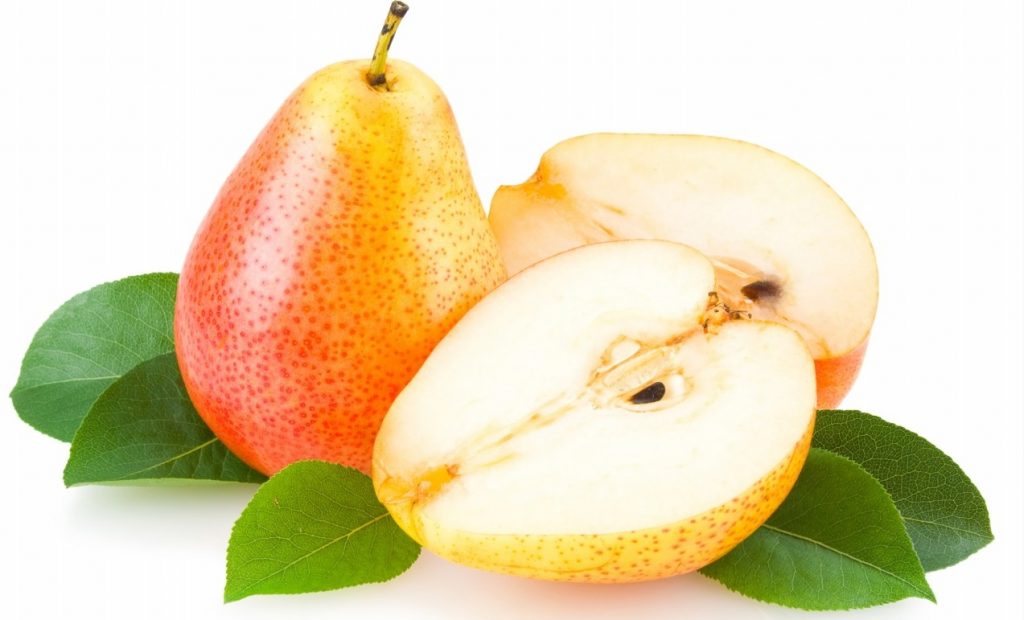
The pulp of the variety is tender and juicy, the fruits are fine-grained, with a white color and a pleasant aroma
The flesh of the variety is tender and juicy, the fruits are fine-grained, with a white color and a pleasant aroma. The fruits have a pleasant sweet and sour taste with a presence of astringency, estimated by the tasters at 4.5 points out of 5. The variety is intended for fresh table consumption.
Periodicity in fruiting was not noticed for the variety. The average yield of the variety over the years of observation is 105 c / ha. The variety is characterized by high winter hardiness, as well as fruit resistance to gall mites and pear scab.
Agricultural technology of cultivation
Site selection on the site
Red-sided prefers quiet, windless plots, on which there are no drafts. Plants of the variety love sunlight, so they should not be planted near houses and other tall buildings.
Red-sided is not self-fertile, therefore, pollinators are required to form a full-fledged yield. The following varieties can be used in their capacity:
- Myth;
- Severyanka;
- Dangling.
Selection of pear seedlings
For planting varieties, seedlings that are no more than 1-2 years old are best suited. The optimum height of a plant of a variety upon purchase is 1 meter. There should be many buds at the top of the plant. 2-year-old seedlings should have 2-3 side stems with a lot of buds. The root system of the variety must have at least 3 shoots with many branches. Dried branches on the variety are a significant disadvantage for the seedling.
Planting pears
In the northern regions, the planting of the Red-sided pear is usually scheduled for the spring, while in the south it is allowed to plant the variety in the autumn. The landing hole is dug one and a half to two weeks before disembarkation. Its depth should be about 1 m, and its diameter should be at least 0.7 m. In case of close occurrence of groundwater, a drainage system should be arranged using pebbles. The distance between the trees of the variety is left equal to 5 m.
The soil extracted from the hole from the upper layer (20-25 cm) is mixed with 300 g of superphosphate, 15 kg of river sand and 20 kg of humus, compost and other organic fertilizers. The resulting nutrient mixture is placed in the seedling hole, after which it is covered with plastic wrap and left like that.
The film is removed from the hole and a wooden stake about 1-1.2 meters long is driven in 4-5 cm from its center with the sharp end down. It will serve to support the pear tree. In the middle of the hole, a small mound of soil is poured. A pear seedling is placed in a hole and the roots are straightened, then they begin to fill it with soil in layers, tightly tamping each new layer. It is necessary to ensure that no voids are formed in the ground. The root collar of the variety should exceed the soil layer by 5-7 cm.
The seedling is tied to a peg, while trying not to injure the tree. A groove about 10 cm deep is dug around the plant of the variety, into which 20-30 liters of water are immediately poured and the soil is mulched to retain moisture.
Irrigation
The red-sided pear is relatively drought-resistant and can do 4 irrigations in one growing season. In dry years with rare precipitation, the level of irrigation of the variety should be increased up to 1-2 times a week with mandatory mulching with humus and peat.
When watering is complete, you need to loosen the soil. This procedure will increase the oxygen saturation of the root system of the variety. They do this carefully, trying not to catch the roots.
Top dressing
The root system of a pear lies quite deep underground, so it makes no sense to apply fertilizers on the soil surface. Instead, it is recommended to resort to watering with nutrient solutions.
If you use only mineral fertilizers, you can achieve gradual acidification of the soil.It is recommended to dilute them with organic matter, which is applied every 2-3 years, while mineral fertilizers are used annually. An adult plant of the variety requires about 30 kg of organic matter, which can be used as:
- compost;
- humus;
- manure.
Before the beginning of the flowering phase, saltpeter (45 g) or carbamide (450 g) is added under the Krasnobokaya variety. After the completion of flowering, the pear is fed with another 250 g of urea. At the same time, this preparation can be used for leaf feeding (50 g / 10 l of water). In autumn, 60 g of double superphosphate and 30 g of calcium and potassium are added under the variety.
Pruning
Correct formation of the crown of a pear tree is especially important for Red-sided in the first 4-5 years of plant life. It is recommended to prune the variety in mid-spring. The best option for crowning for Krasnoboka is one that allows you to obtain a tiered crown structure. It most fully corresponds to the habitus of culture.
Immediately after planting, all stems of the seedling are shortened by 20%. The next year, among all the branches, 3-4 of the strongest and fully formed ones are chosen, the rest are removed. The center conductor is cut 20-25 cm.
In the 3rd year, a second layer of pear is formed, which should lag behind the first by about 40 cm. 2-3 shoots are left on it and the rest are cut off. Shoots growing between tiers are shortened by 2/3. The central trunk is cut off by 30 cm.
In the 4th year, the third tier is formed, which should consist of two large branches. In the following season, the center conductor is shortened to equal the third tier.
We must not forget about regular sanitary pruning. It consists in the timely removal of diseased branches, as well as those that have dried up, grow inward and upward, thickening the crown, have received significant mechanical damage.
Cold protection
Despite the relative winter hardiness, Red-sided pear can suffer from freezing temperatures and other unfavorable factors of the winter period, especially at a young age. Seedlings are protected with burlap and spruce branches. To save mature trees, it is first of all necessary to clear the near-stem sector from leaf litter, fallen branches, fruits and other debris. Then the soil is dug onto the bayonet of the shovel, thereby destroying harmful insects. Next, whitewash the trunk and a third of the branches located in the lower tier. To prepare the material for whitewashing, the following ingredients are mixed:
- 0.3 kg of copper sulfate;
- 1 kg of clay powder;
- 2 kg of lime.
The last step is to mulch the plantings. Peat or sawdust is distributed in an even layer 15-20 cm high over the surface of the near-stem sector.
Plant protection
According to the description, the Red-sided pear is resistant to the main diseases and pests of its culture. However, during cultivation, she is able to be amazed by such ailments as:
- rust;
- fruit rot;
- black cancer.
In the first case, it is necessary before the beginning of flowering and after its completion to process the plantings with Hom (80 g / 10 l of water), and in the fall, upon completion of the harvest, the plants are sprayed with a 1% solution of Bordeaux liquid. Fallen leaves are removed from the plot and burned.
Rust is treated by treatment with Skor (1 ampoule / 10 l of water) during foliage opening. When the flowering of the pear is completed, the Horus sachet is diluted in 10 liters of water and the plantings are treated with the resulting solution. In autumn, all mummified fruits are collected and destroyed on the tree and near it.
To fight against black cancer, it is necessary to cut off the affected parts of the plant with a sharp knife, while capturing 1-2 cm of unaffected wood. Damaged tissues are sprayed with a 1% solution of copper sulfate and garden varnish. The foliage and dried fruits are harvested and destroyed in the fall.
Red-sided pear can also be affected by pests.So, to protect against hawthorn, the buds are sprayed with a 0.5% solution of Karbofos during blooming. Before budding, the plantations are treated with Karbofos (60 g / 8 l) or Actellik (1 ampoule / 2 l) to destroy the pear flower beetle.
To combat the winter moth during the growing season, the plantings are sprayed with nitrafen (200 g / 10 l of water). The ringed silkworm is destroyed by cutting off the ovipositor stems, as well as by treating the plants with Enterobacterin (50 g / 10 l of water).
In the first years of growing a pear seedling, serious damage can be caused by weeds, which draw on a number of nutrients and moisture. Their timely removal is an important factor in the care of the Red-sided pear. This is best done after the next watering.
Collection and storage of fruits
Red-sided enters the fruiting season at 5-7 years of cultivation. On average, 80-100 kg of fruits are obtained from one tree. Harvesting begins in the second half of September. The fruits are harvested unripe, because as they ripen, they immediately crumble and receive serious mechanical injuries. Premature harvesting will not affect the taste of the crop in any way, since it ripens during storage.
The fruits are placed in wooden boxes with holes. The pear harvest is stored in refrigerators, as well as in cellars and basements at a temperature of 0 ... + 4 ° C and an air humidity of 85-90%. The shelf life of the crop varies from 1 to 3 months, this figure depends on weather conditions.
Advantages and disadvantages
The advantages of the Red-sided pear over other varieties include:
- increased winter hardiness and frost resistance;
- high commercial quality of the crop;
- resistance to scab, powdery mildew, cytosporosis, as well as to leafworm, pear moth, gall mite, honeydew, aphids.
The variety also has some negative properties:
- fine grain of fruits;
- slight astringency in taste;
- shedding of a ripe crop;
- impossibility of long-term storage.
Caring for a red-sided pear is not difficult and can be successfully carried out by any summer resident or gardener. If you follow all agrotechnical recommendations at the end of the season, the variety will form a good quality harvest.
